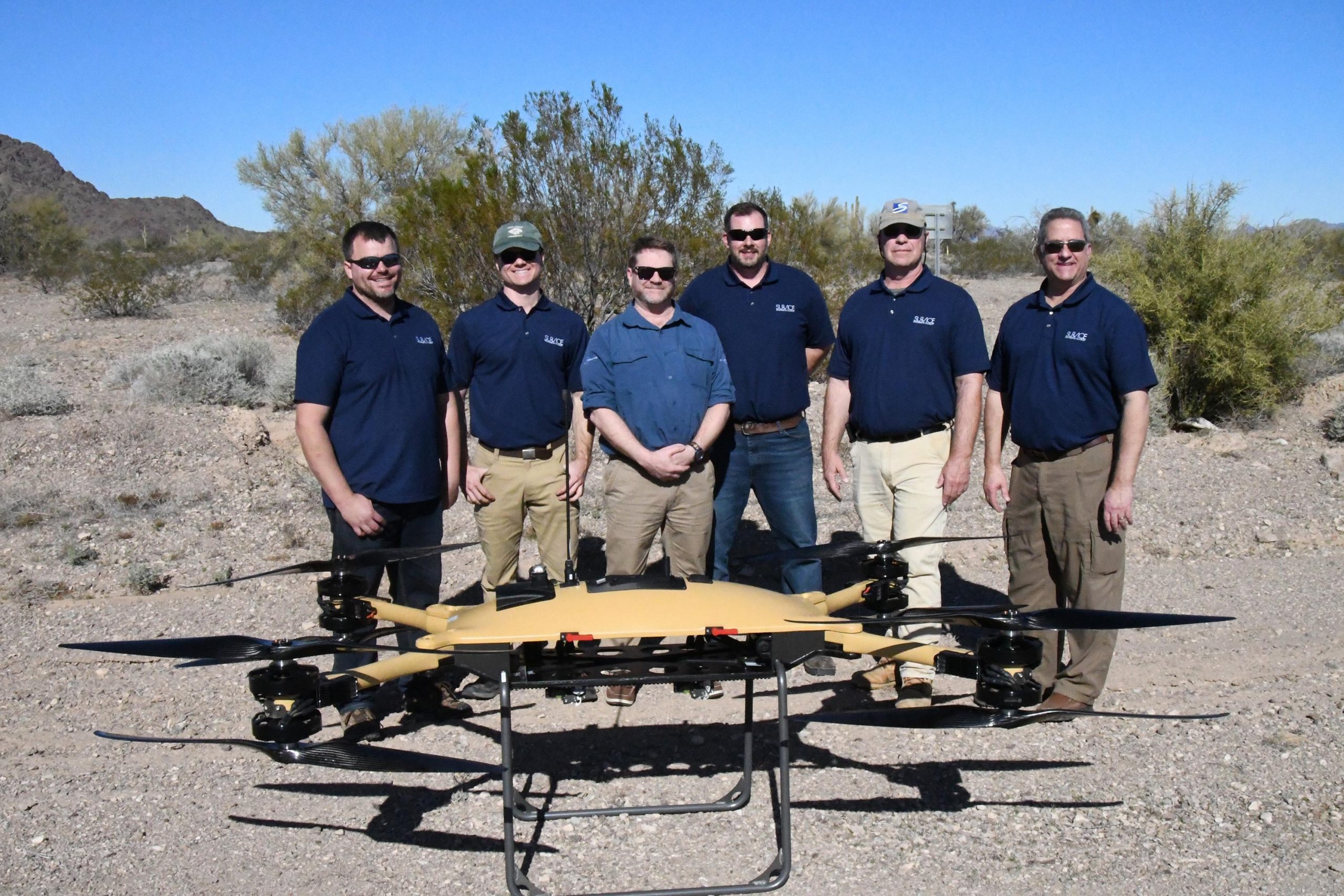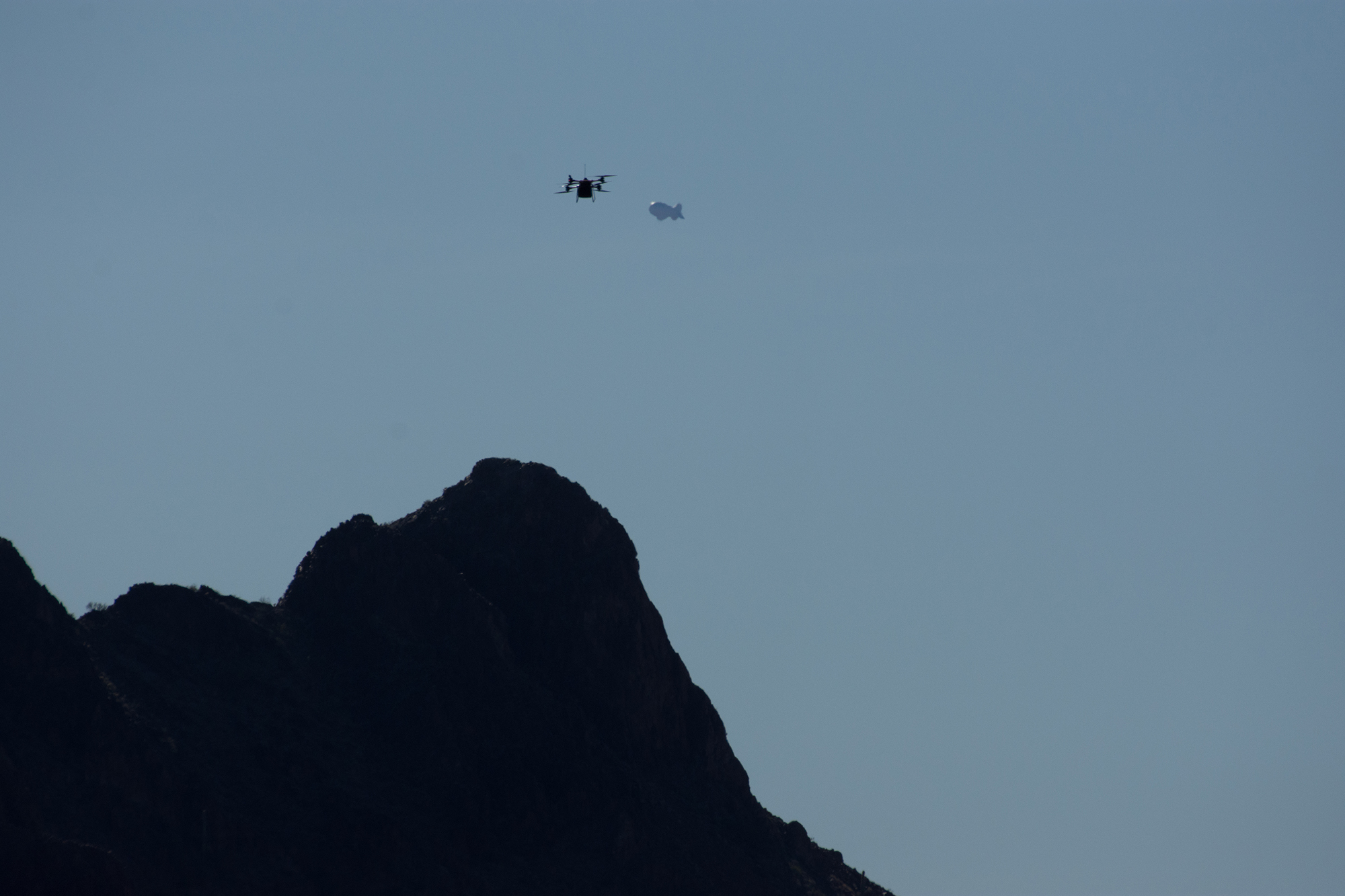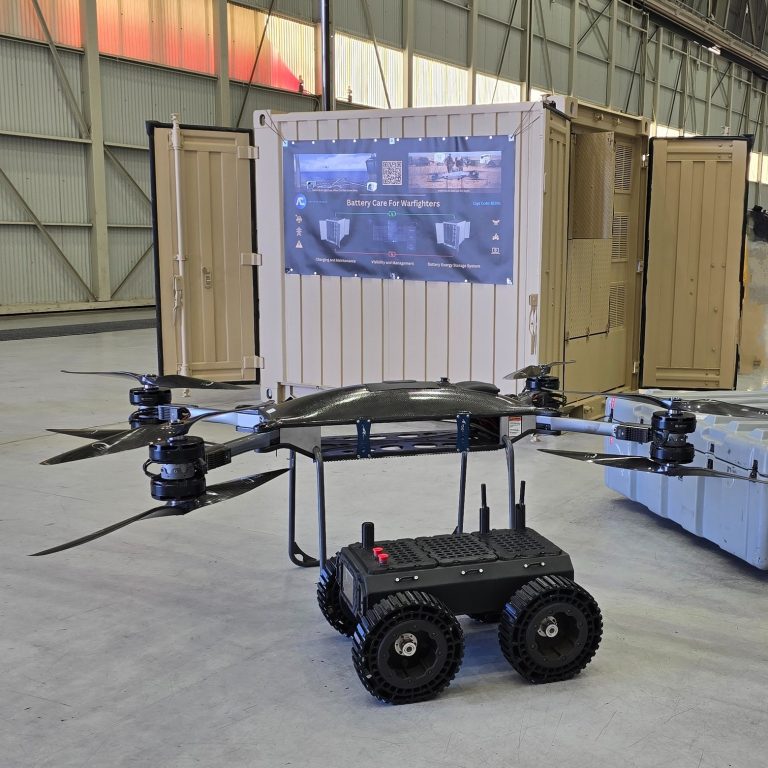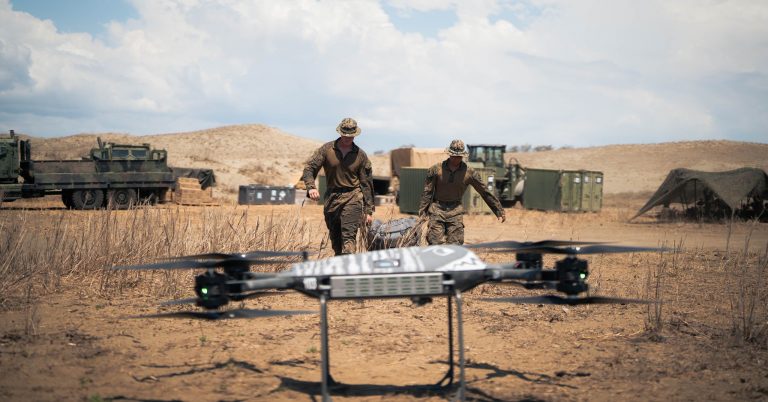SURVICE Engineering, partnered with Malloy Aeronautics, successfully competed in the U.S. Navy and Marine Corps Tactical Resupply Unmanned Aircraft System (UAS) fly-off competition at Yuma Proving Ground in Arizona, taking first place in the nationwide competition. The SURVICE-Malloy team was one of six competing organizations selected by the Navy to perform a series of demanding flight tests.
“We’re excited to win this competitive challenge event, demonstrating the current state-of-the-art in VTOL drone technology,” said Mark Butkiewicz, who oversees SURVICE’s Applied Technology Operation. “We started with a world-class commercial product from Malloy Aeronautics and added necessary tech to provide the tactical functionality required by the Marines.”
Chris Malloy, founder of Malloy Aeronautics added, “We’ve been collaborating with SURVICE to bring our drone technology to the U.S. military for several years, and this event represented a great opportunity to showcase our technology to senior leadership within the Navy and Marine Corps. We specifically designed our UAS platforms to meet the most demanding requirements, and the results of this challenge help validate many of our design decisions.”
“We learned a lot about where industry is in terms of design maturity and what our requirements need to be,” said Col. John Neville, Navy and Marine Corps Small Tactical UAS (PMA-263) program manager, who oversees the TRUAS effort. “It was great to have Marines, our acquisition leads and industry in one place to really get a sense of where we need to be and what the next step is for the TRUAS effort.”
“If the TRUAS demonstration prototypes meet the fleet’s requirements, the Marine Corps could begin conducting field user evaluation on the prototypes as early as FY2021,” said TRUAS Team Lead Christina Petrow. “The fly-off prize challenge has been a great rapid acquisition effort that allowed us to evaluate the existing technologies within a short time period. We have a better sense of what is available, affordable and viable for the Marine Corps.”




